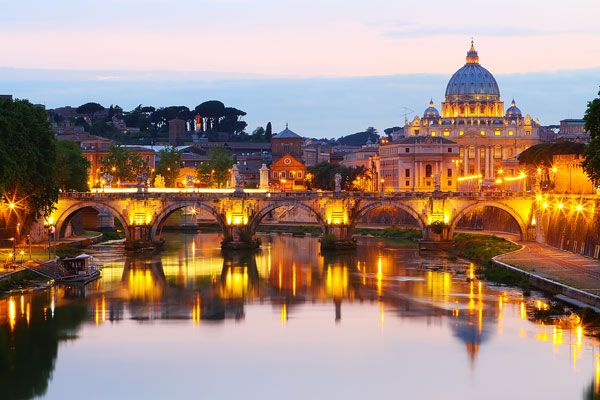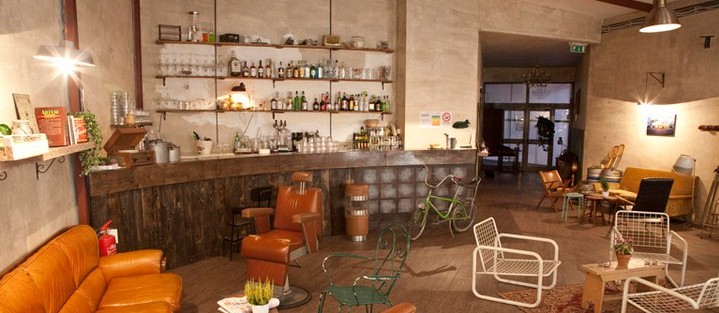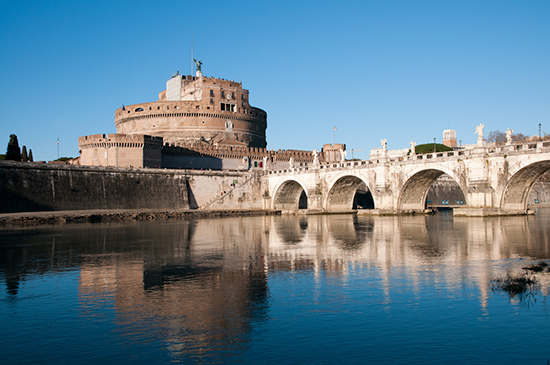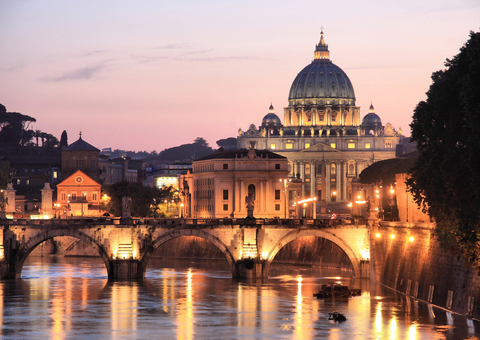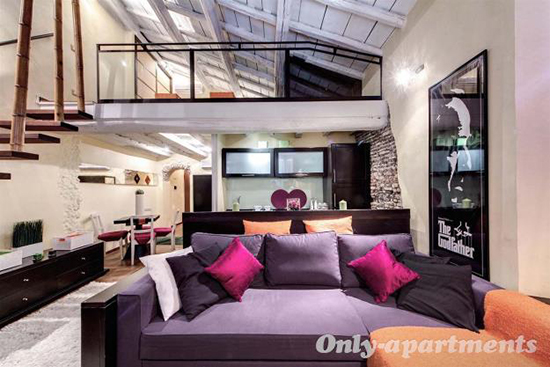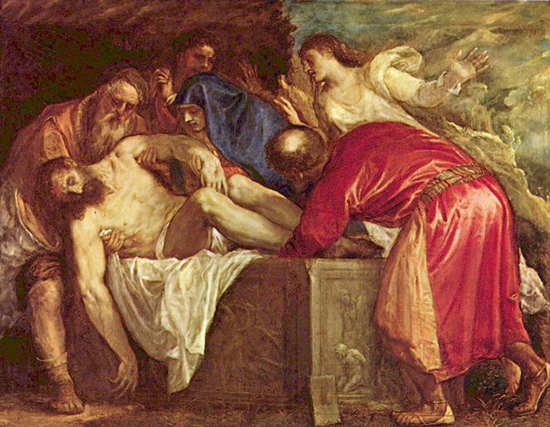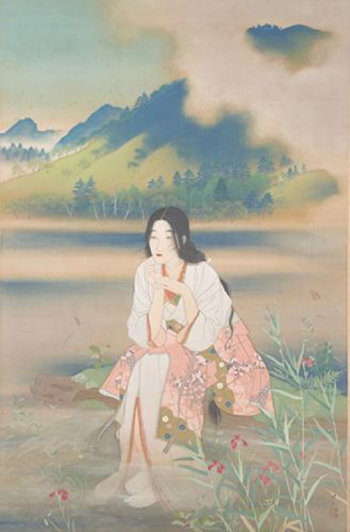Carola Gasparini
On December 8th, the Holy Door of Saint Peter’s Basilica will open its doors to mark the start of the 2016 Jubilee year; a momentous religious event that millions of people worldwide have been preparing for.
Carola Gasparini
The Castelli Romani are a unique option for a relaxing day on the outskirts of Rome, enjoying some fresh air and great food.
Carola Gasparini
We’ve all heard about the infamous hipsters at this point in the story. But what does it mean to be a hipster? The term was born in the US in the 30’s and 40’s, although the hipster generation is a more recent phenomenon that started gaining momentum circa 2010. In Rome, you’ll mostly encounter them in the areas of Rione Monti and Rione Testaccio. Your average hipster wears buttoned-up shirts and All Star or Vans shoes. His face will proudly sport a moustache like that of a Sicilian man, a beard, tattoos and large-frame vintage glasses. And for her: skinny high-waisted jeans, vintage earrings and hot pants. Hipsters are almost always graduates with an interest in photography, art, skating, or cycling. Where to find Rome’s hipsters? Rione Monti 2 Periodico Café is one of Rome’s hipster venues par excellence. You’ll feel right at home here! In fact, there are vintage chairs, armchairs and tables arranged in true vintage style. There’s a space where you can read, eat, listen to music, have a chat with your friends, and even make your own coffee right in their kitchen! The area of Rione Monti is well-preserved, with its oldest part dating back to the eighteenth century and with an archeological site. Some of the peculiarities of the area are its cobblestoned streets and its wonderful vintage markets. The Trastevere Neighborhood Let’s journey on to Trastevere now, where you’ll find Fish Market, for high quality fish at its chicest. They serve fried fish at the bar, and our hipster friends just can’t get enough of it. Moreover, the area...
Mónica Boixeda
Aperitivo: The Italians know how to live well, and one of the best things about Italian cuisine is the aperitivo, or aperitif. It’s an alcoholic drink (like a Negroni, for example) to whet your appetite that is accompanied by something light to nibble on such as olives or sausage. And if you can enjoy it on a sunny terrace in the Eternal City, all the better. Bernini : This Italian artist is the creator of many of the sculptures that featured in the Roman piazzas. Gian Lorenzo Bernini is responsible for the stunning Trevi Fountain and Fountain of the Four Rivers in the Piazza Navona. The works of this Baroque artist are highly realistic and impressive if they are lighted at night. Colosseum: Perhaps the best known Roman monument, the Colosseum was the Roman amphitheater where gladiator fights and other barbaric activities were held to entertain the people. It is one of the most important architectural works of the Roman period and was able to seat up to 80,000 people. Impressive. Dolce Vita: Nobodyy represents Italian society better than Italian filmmaker Federico Fellini, and his 1960 masterpiece La Dolce Vita depicts postwar Italian society in the form of both comedy and drama. A must-see for any lover of film and of Rome. Espresso: This coffee gets its name because of the way it is drunk. There are still cafés in Rome where you can go in, pay for the coffee, take one of the many prepared at the bar and then leave, all in a few seconds. Fontana di Trevi: For many this is the most impressive in all...
Mónica Boixeda
Rome is back on the list of the “top ten” major film cities. This time it was the director Paolo Sorrentino who has managed to depict the authenticity of the Romans. The movie “The Great Beauty” recently won the 2014 Oscar for Best Foreign Language Film. It’s his fourteenth award. So with the excuse to learn more about this film, the director and the Eternal City, we are taking you on a tour of Rome. Sorrentino´s latest film is set in an idyllic setting on Janiculum Hill when a Japanese tourist faints and drops dead while observing the beauty of Rome from the top. You definitely shouldn’t miss seeing one of the best views of the city of Rome. Janiculum Hill, a UNESCO World Heritage Site since 1990, is located in the famous Trastevere district, which is known for its bohemian and alternative character. The protagonist of the film, Jep Gambardella is a Don Juan, a writer and seducer of women with a busy life divided between parties with friends, fancy dinners, feasts, etc. But, of course, as the saying goes, all that glitters is not gold. Jep has been trying to ignore that he, like everyone else, is getting older. He realizes he is no longer the person he was and decides to turn his life around. And all this takes place in a setting to envy. The central terrace of his apartment, which overlooks the Roman Colosseum, is pretty hard to beat. Imagine going to a party on this huge terrace looking out onto this illuminated work of art and enjoying a drink by the light of...
Miss Moci
Rome has plenty and more to show for. Throughout the year visitors flock to the Eternal City to marvel at monuments such as the Coliseum, the Pantheon, the Trevi Fountain, the Spanish Stairs, the…really the list is endless. Visiting the Vatican alone – an entire state on its own in the middle of the Italian capital – will leave you simply speechless. Fascinating about this magnificent city is certainly the combination of the modern and the ancient. Don’t forget you are in one of the most vibrant European cities, but just as you turn a corner you can find yourself travelling back into the ancient times of the Roman Empire. We love the mix between ancient architecture and functional, modern design and that is why we would like to present some of our best design apartments in Rome with some truly stunning interior design: You can stay right next to the Trevi Fountain ON TREVI 1 Apartment Or maybe you prefer Piazza Navona is this minimalistic apartment with a modern kitchenette NAVONA DESIGN Apartment You can also opt for clean wooden design in Rome´s emblematic neighborhood Trastevere. Here you can stay in style in one of the prettiest parts of the city. SAN CALLISTO Apartment If you like it colorful and you’re looking for accommodation in Rome for a big group. COLOSSEO Apartment might be just what you need. Up to 10 people have space to sleep....
Sepelaci
Quartiere means neighborhood, although the Quartiere Coppedè isn’t exactly a neighborhood. Hidden in the bowels of the city, it is made up of 18 palazzos, noble constructions that are accompanied by other palaces and buildings. Amid these, there is a square called Piazza Minzio unto which the doors of the architectural structures open. It also has a fountain called Fontanna delle Rane (Fountain of the Frogs). The complex formed by these buildings was designed by architect Gino Coppedè, after whom it is also named. Work began in 1913 and continued until 1927, which is when the last of the buildings that make up the complex was completed. This range of years resulted in an mix of architectural styles as they were being built, and you can find a variety of elements from many styles. From the unique, free style of the architect to art nouveau detailing or even baroque art, these all come together in the facades and interiors of these palazzos. This great variety means that no matter how many times you have visit this particular area of Rome, you are pretty much guaranteed to find some detail that you overlooked on a previous visit. And surprises are hidden in every nook and cranny, so it’s easy to miss one or more even after several visits. The most prominent buildings there are the three homes that open to the Fontana delle Rane, especially the Villina delle Fate (Villa of the Fairies), which was built in 1920. The spectacular nature of this area makes it a special place in the Quartiere Coppedè. And while all of this area is...
Lidia M
The exhibition of the works of Tiziano Vecellio, which runs until June 16, concludes the work that the Scuderie del Quirinale began a while back to analyze the artistic production of Venetian painting and the role it has played in the renewal of Italian and European culture. Before Titian, one has been able to admire the works of painters of the modern pictorial revolution, artists like Antonello da Messina, Giovanni Bellini, Tintoretto and Lorenzo Lotto, at the Scuderie. Now it’s Titian turn. His works bear witness to what an important figure his was in the world of painting. The exhibition presents the highlights from the Italian artist’s unstoppable rise, from his beginnings under the guidance of Giovanni Bellini and Giorgione to his being recognized as an artist of international fame. Many of Titian’s works were commissioned, and not for just anyone but for the most important figures of that period, including Charles V (during his coronation in 1530), and his son Philip II, future king of Spain. The exhibition portrays not only his work as a religious painter, but also the difficult job of being a portraitist for the nobility of the time. The exhibition at the Scuderie del Quirinale is accompanied by scientific studies that have analyzed the entire production of this artist. These studies, conducted by the Ateneo Center for Visual Arts at the University of Bergamo, have managed to make fine distinctions between the works of Titian, from those developed at the beginning of his career in small workshops to the evolution of his own techniques. You have April, May and part of June to visit...
Cornejo
To commemorate the 50th anniversary of the Japanese Culture Institute in Rome, known as the Japan Foundation, the Galleria Nazionale d´Arte Moderna and the Museum of Modern Art of Kyoto are organising a large exhibition dedicated to 20th century Japan, the first one ever in Italy. The exhibition encompasses a period of intense transformation without exploring that goes from the restoration of the Meiji Emperor in 1868 to the Second World War. The exhibition includes a total of 111 paintings and 59 works of decorative art from the main museums and private collections in Japan. For preservation reasons, due to the particular sensitivity of the materials, the exhibition is divided in two different exhibition phases, with an almost-complete substitution of the paintings and a partial one of the decorative art, in accordance with the following calendar: The first exhibition is from the 26th of February 2013 to the 1st of April 2013; the second exhibition is from the 4th of April 2013 to the 5th of May 2013. The curators of the exhibition are Masaki Ozaki (director of the Museum of Modern Art of Kyoto) and Ryuichi Matsubara (Head of Investigation of the Museum of Modern Art of Kyoto). The commissioner of the exhibition is Stefania Frezzotti (curator of the National Gallery of Modern Art of Rome). The exhibition takes place at the National Gallery of Modern and Contemporary Art of Rome (Galleria Nazionale d´Arte Moderna e contemporanea) on Viale delle Belle Arti, 131, Rome. The opening times are from 10.30am to 7.30.pm (last entry at 6.45pm). Ticket prices are 12€ and 9.50€ for concessions. On July 8th 1853, four...
Ara
If you have visited Rome, at least once, perhaps you notice the important role that cats play in the Roman society. That is why the Gattare (cat ladies) are essential to maintain equilibrium in the streets of the capital of Italy. Although there are men doing this work, the name of this job has a feminine connotation due to the high number of female voluntaries. Gattare’s most symbolic place of action is located at Largo Argentina, specifically at the archeological zone of the sacral area, which is ideal for cats to take refuge from the hustle and bustle of the city. This is also a place full of history, where Brutus stabbed Julius Caesar. Located in the heart of the city, Largo Argentina hosts many cats that actually seem to be happy. Those who love animals can perfectly distinguish when an animal suffers a lack of food or love. A day in the life of a Gattare begins at 8 am in Torre Argentina Cat Sanctuary, where they have to clean and disinfect cages, as well as litter boxes of cats that are under special care, because they just had surgery. At 11 a.m starts the food distribution. The Gattare should perfectly know which animals have specific dietary requirements. From midday hordes of tourists arrive. During the Afternoon there is a medical treatment session, as well as a second round of feeding and cleaning. Lia and Silvia are the creators of this interesting place, which was conceived in 1994 with the idea of offering shelter to over 100 abandoned cats that hided among the ruins. After hard work, Lia...

 English
English Français
Français Deutsch
Deutsch Italiano
Italiano Español
Español